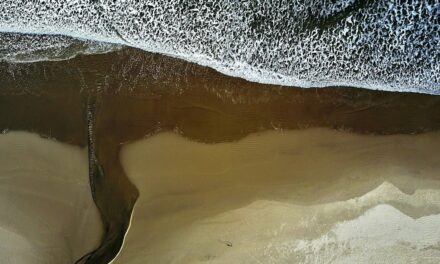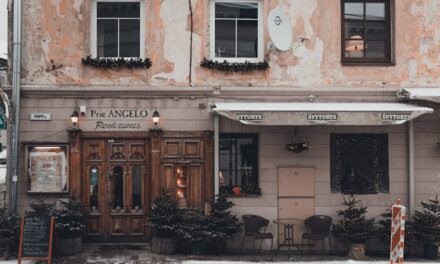The story of the artist known as Giulio Romano begins in the vibrant city of Rome around the year 1492. Born into a family of modest means, Giulio was exposed to the world of art from an early age. His father, a painter himself, recognised his son’s prodigious talent and sought to nurture it.
This early encouragement led Giulio to pursue formal training in the arts, where he quickly distinguished himself among his peers. His formative years were spent absorbing the techniques and philosophies of the Renaissance, a period that celebrated humanism and the revival of classical antiquity. Giulio’s artistic journey took a significant turn when he entered the workshop of the renowned painter Raphael.
This apprenticeship would prove to be a pivotal moment in his development as an artist. Under Raphael’s tutelage, Giulio honed his skills in drawing, composition, and colour theory. He was not merely a passive learner; rather, he actively engaged with the artistic principles that defined the High Renaissance.
The influence of Raphael would remain a constant throughout Giulio’s career, shaping his aesthetic sensibilities and artistic ambitions.
Summary
- Michelangelo’s early life and training in Florence laid the foundation for his future success as an artist.
- His apprenticeship with Raphael in Rome allowed him to learn from one of the greatest artists of the time and further develop his skills.
- Michelangelo’s works in Rome and Mantua showcased his talent and established his reputation as a leading artist of the Renaissance.
- His influence of classical art and architecture can be seen in his iconic works such as the Sistine Chapel ceiling and the design of St. Peter’s Basilica.
- Michelangelo’s mannerist style and innovative approach to art set him apart from his contemporaries and continue to inspire artists to this day.
Apprenticeship with Raphael
Giulio Romano’s apprenticeship with Raphael was marked by an intense period of learning and creative exploration. As one of Raphael’s most promising students, Giulio was entrusted with significant responsibilities within the workshop. He assisted in the execution of some of Raphael’s most celebrated works, including the frescoes in the Vatican Stanze.
This experience allowed him to witness firsthand the intricacies of large-scale mural painting and the collaborative nature of artistic production during this era. The relationship between master and apprentice was not merely one of instruction; it was also one of mutual respect and admiration. Raphael recognised Giulio’s potential and often encouraged him to develop his unique style.
This mentorship fostered an environment where innovation could flourish, and Giulio began to experiment with his interpretations of classical themes and motifs. By the time he completed his apprenticeship, Giulio had not only mastered the technical skills required of a painter but had also begun to cultivate his own artistic voice, setting the stage for his future contributions to the art world.
Works in Rome and Mantua
Following his time with Raphael, Giulio Romano embarked on a prolific career that would see him create numerous works in both Rome and Mantua. In Rome, he continued to build upon the foundations laid during his apprenticeship, producing a series of frescoes that showcased his growing mastery of colour and form. His work during this period was characterised by a dynamic use of space and an ability to convey emotion through gesture and expression.
Notable among these works is the “Vision of Ezekiel,” which exemplifies his innovative approach to narrative composition. In 1524, Giulio accepted an invitation from Duke Federico II Gonzaga to move to Mantua, where he would serve as court painter and architect. This transition marked a significant turning point in his career, as it provided him with the opportunity to realise ambitious projects on a grand scale.
In Mantua, he designed the Palazzo del Te, a masterpiece of Mannerist architecture that reflects his deep understanding of classical principles while simultaneously pushing the boundaries of traditional design. The frescoes within this palace, such as “The Fall of the Giants,” reveal Giulio’s ability to blend mythological themes with a sense of theatricality, further establishing his reputation as a leading artist of his time.
Influence of Classical Art and Architecture
Giulio Romano’s work is deeply rooted in the classical tradition, yet he possessed a remarkable ability to reinterpret these influences in innovative ways. His exposure to ancient Roman art and architecture profoundly shaped his artistic vision. He was particularly fascinated by the ruins of antiquity that dotted the Italian landscape, drawing inspiration from their grandeur and elegance.
This reverence for classical forms is evident in many of his architectural designs, where he employed classical orders and motifs while infusing them with a sense of dynamism that was distinctly his own. Moreover, Giulio’s engagement with classical art extended beyond mere imitation; he sought to capture the spirit of antiquity while adapting it to contemporary sensibilities. His works often reflect a dialogue between past and present, as he integrated classical themes into modern narratives.
This synthesis not only enriched his artistic output but also contributed to the broader Mannerist movement, which sought to challenge traditional notions of beauty and proportion. In this way, Giulio Romano emerged as a pivotal figure in bridging the gap between Renaissance ideals and the evolving artistic landscape of the 16th century.
Mannerist Style and Innovations
As an artist firmly entrenched in the Mannerist style, Giulio Romano embraced its defining characteristics while also pushing its boundaries. Mannerism is often characterised by elongated forms, complex compositions, and an emphasis on artificiality over naturalism. Giulio’s works exemplify these traits through their intricate arrangements and exaggerated poses that convey a sense of movement and tension.
His figures often appear weightless, defying gravity in ways that challenge traditional representations of human anatomy. One of Giulio’s most significant innovations was his ability to create spatial illusions within his compositions. He employed techniques such as foreshortening and chiaroscuro to enhance the three-dimensionality of his figures, drawing viewers into a dynamic visual experience.
This approach is particularly evident in his frescoes at Palazzo del Te, where he masterfully orchestrated light and shadow to create depth and drama. By embracing these Mannerist innovations, Giulio Romano not only solidified his place within this artistic movement but also paved the way for future generations of artists who would continue to explore the possibilities of form and space.
Collaborations with Other Artists
Throughout his career, Giulio Romano engaged in numerous collaborations with fellow artists, further enriching his artistic practice. These partnerships were often characterised by a spirit of camaraderie and mutual respect, allowing for the exchange of ideas and techniques that would ultimately enhance their individual works. One notable collaboration occurred during his time in Mantua when he worked alongside other prominent artists such as Francesco Primaticcio and Giovanni Battista Bertani on various projects for Duke Federico II Gonzaga.
These collaborative efforts resulted in a fusion of styles that reflected the diverse influences present in Mantua at the time. For instance, while Giulio’s Mannerist sensibilities were evident in many projects, his interactions with other artists introduced elements from different artistic traditions, creating a rich tapestry of visual language. This collaborative spirit not only fostered innovation but also contributed to the development of a unique artistic identity for Mantua as a cultural centre during the Renaissance.
Legacy and Impact on Baroque Art
Giulio Romano’s influence extended far beyond his lifetime, leaving an indelible mark on the trajectory of Baroque art. His innovative approach to composition and form laid the groundwork for subsequent generations of artists who sought to explore new avenues of expression. The dramatic use of space and emotional intensity found in Giulio’s works can be seen echoed in the works of Baroque masters such as Caravaggio and Bernini, who built upon his legacy while infusing their own distinct styles.
Moreover, Giulio’s architectural contributions significantly impacted Baroque design principles. His ability to blend classical elements with Mannerist innovations inspired architects who followed him, leading to a more dynamic approach to spatial organisation in buildings. The Palazzo del Te remains a testament to this legacy; its playful yet grand design continues to captivate architects and art historians alike as an exemplar of how art can transcend its historical context while remaining relevant through time.
Rediscovery and Recognition
Despite facing periods of obscurity following his death in 1546, Giulio Romano has experienced a resurgence in recognition over recent decades. Art historians have increasingly acknowledged his contributions to both painting and architecture as pivotal moments in the evolution of Western art. Exhibitions dedicated to his work have emerged across Europe, showcasing not only his masterpieces but also illuminating lesser-known aspects of his career.
This renewed interest has prompted scholars to re-evaluate Giulio’s role within the broader narrative of art history. His innovative spirit and willingness to challenge conventions resonate with contemporary audiences seeking authenticity and originality in artistic expression. As we continue to explore Giulio Romano’s legacy, it becomes clear that he remains an essential figure whose work transcends time—an artist whose vision continues to inspire new generations in their pursuit of creativity and innovation within the arts.
For those interested in honing their artistic skills further, consider exploring the article Realistic Acrylic Painting: Photoreal Techniques. This insightful piece delves into the techniques and methods used to create hyper-realistic paintings with acrylics, offering valuable tips and tricks for artists looking to elevate their work to the next level. Just as Giulio Romano mastered the art of creating lifelike figures and scenes, this article provides a comprehensive guide for artists seeking to achieve a similar level of realism in their own artwork.
FAQs
Who was Giulio Romano?
Giulio Romano was an Italian painter and architect. He was born in 1499 in Rome and died in 1546 in Mantua, Italy. He was a prominent figure in the High Renaissance and Mannerist styles of painting.
What is Giulio Romano known for?
Giulio Romano is known for his work as a painter, architect, and decorator. He was a key figure in the development of Mannerism, a style of art that emerged in the late Renaissance period.
What are some of Giulio Romano’s most famous works?
Some of Giulio Romano’s most famous works include the frescoes in the Palazzo del Te in Mantua, the Sala di Troia in the Palazzo Ducale in Mantua, and the altarpiece of the Madonna and Child with Saints in the Church of San Benedetto in Mantua.
What influence did Giulio Romano have on the art world?
Giulio Romano’s work had a significant influence on the development of Mannerism and the transition from the High Renaissance to the Baroque period. His use of exaggerated proportions, complex compositions, and theatrical lighting set the stage for the Mannerist style that followed.
What was Giulio Romano’s relationship with Raphael?
Giulio Romano was a pupil and assistant to the renowned painter Raphael. He worked closely with Raphael on various projects, including the frescoes in the Vatican and the Villa Farnesina in Rome. After Raphael’s death, Giulio Romano completed many of his unfinished works and continued to develop his own unique style.



